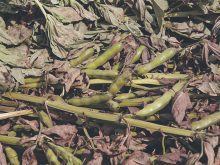Western Canadians owe their prosperity in no small measure to the region’s vast endowments of natural resources.
Whether it be Alberta’s oil sands, Saskatchewan’s potash, Manitoba’s hydro capacity, British Columbia’s mines and forests or any of the myriad other resources at our fingertips, living off the land (and what’s under it) has served us well.
At the same time, however, we have always had something of a schizophrenic attitude toward our dependence on natural resources.
While with one breath we acknowledge that our current prosperity is the result of our resource wealth, with the next we lament our reliance on natural resources and worry that we need to diversify our economy and become less reliant on the export of raw materials.
Read Also

Proactive approach best bet with looming catastrophes
The Pan-Canadian Action Plan on African swine fever has been developed to avoid the worst case scenario — a total loss ofmarket access.
There are many reasons why broadening our economic base is a good idea.
For one, resource-based industries are often subject to gut-wrenching volatility. The boom-bust cycle that most of us in the West know so well (Manitobans are a notable exception) causes profound and often underestimated economic damage.
While the downside to the troughs is obvious, even the peaks can have negative consequences.
For example, labour shortages in boom times create delays and drive up the costs of making new investments and expanding existing activity.
Volatility also makes it hard for governments and businesses to plan beyond a short time horizon.
Another reason is that even though we have considerable untapped resource potential in the region, much of that wealth is non-renewable. For example, at some point our oil and gas will run out, will no longer be cost-effective to recover or will gradually be replaced by alternative energy sources.
As well, there is the issue of value-added activity. Some argue that western Canadians have built their collective livelihood around selling their goods at their lowest point on the value chain and then buying them back at the highest point as finished goods. Performing more value-added work on our resources not only allows us to move up the value chain, but also smooths out the overall effect of commodity price swings.
So if diversification offers so many benefits, why is it not higher up on the list of priorities?
The issue is that resource dependence is only considered to be a problem when times are bad. During economic booms, no one is particularly concerned about overreliance on natural resources because those resources are usually driving the boom in the first place.
By contrast, when the market for resources and raw materials goes south, as it inevitably does, western Canadians are suddenly confronted with the flip side of resource dependence. Even though the benefits of a more diversified economy suddenly become obvious under the harsh light of a commodity price crash, two new problems appear.
One is that the duration of a typical economic downturn is a lot shorter than the time it would take for diversification efforts to have any impact. In other words, when the problem appears, it’s already too late for diversification to help.
As well, our ability to diversify during tough economic times is hamstrung by a lack of resources and the emergence of more pressing priorities.
In short, when times are good, economic diversification seems unnecessary, but when times are bad, we are too busy just trying to get by to focus on diversification. It’s like having a hole in your roof: when it’s sunny outside, you don’t bother fixing it and when it’s raining, you can’t.
Western Canada is presently outperforming the rest of the country economically, so solving this riddle is not high on the current list of priorities. In the long-term, however, we avoid it at our peril.
Michael Holden is senior economist with the Canada West Foundation. This article is reprinted from Currents, the foundation’s bi-monthly economic newsletter, and has been edited for length.

















